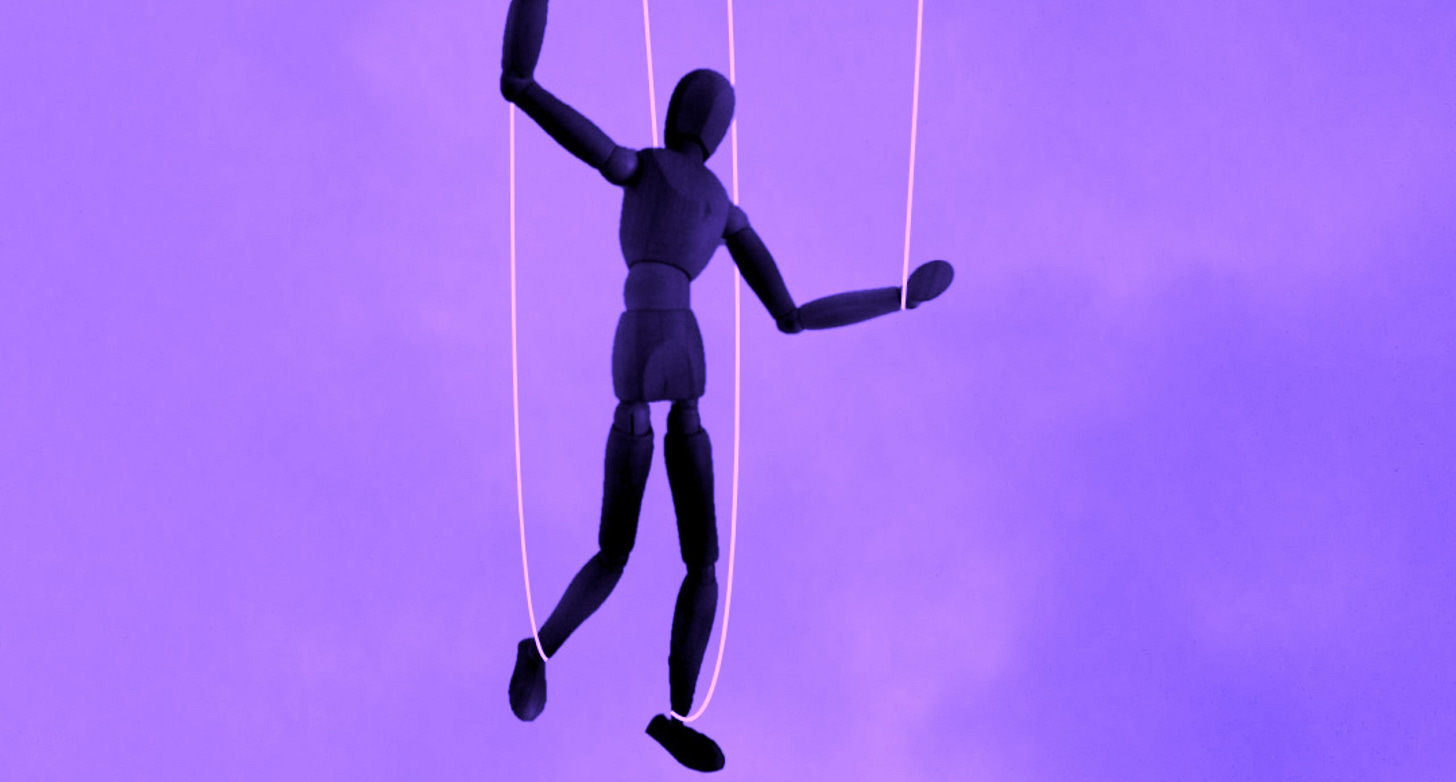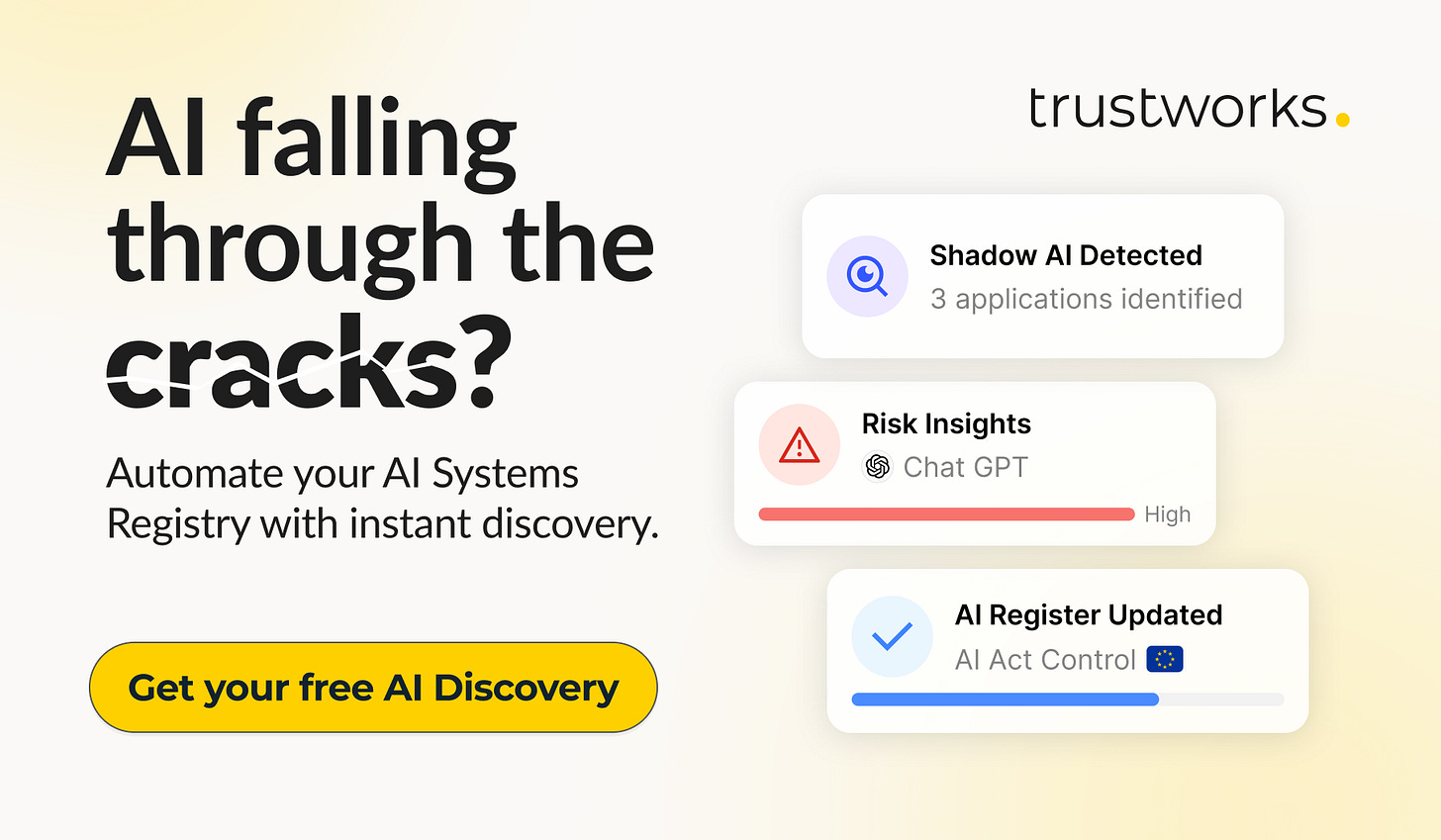Generative AI Wave: The Second Phase
Plus: What is happening in AI | Edition #238
👋 Hi everyone, Luiza Jarovsky here. Welcome to the 238th edition of my newsletter, trusted by more than 79,300 subscribers worldwide. It is great to have you here!
🎓 This is how I can support your learning and upskilling journey in AI:
Join my AI Governance Training [apply for a discounted seat here]
Meet peers and ask questions in my private community
Discover your next read in AI and beyond with our AI Book Club
Receive our job alerts for open roles in AI governance and privacy
Sign up for weekly educational resources in our Learning Center
👉 A special thanks to TrustWorks, this edition's sponsor:
Maintaining an accurate AI Register is no longer optional. The EU AI Act leaves no time to waste, and hidden tools can cause compliance gaps. TrustWorks detects shadow AI, updates your AI Register automatically, and gives you clear steps for risk management. Get your free AI Discovery.
*To support us and reach over 79,300 subscribers, become a sponsor.
🔥 Before we start, do not miss the most important AI developments this week, curated and commented on by me:
AI chatbots + ads: Meta will begin using AI chatbot conversations to target personalized ads, and people will not be able to opt out. Meta’s plans for an ‘AI-augmented future’ are utterly dystopian, and they seem to be just getting started. Fun fact: for now, the policy will not apply to the UK, EU, or South Korea (regulating tech actually works).
ChatGPT shopping: People can now buy using ChatGPT, but few have realized how problematic agentic shopping can be. A new wave of cyber threats is coming, and my recommendation is not to blindly trust companies and platforms (as security systems probably still have a lot to improve).
The TikTokzation of AI: OpenAI has just launched Sora 2, its TikTok-like app, where people can share and remix AI-generated videos (?!). It is very similar to Meta’s ‘Vibes,’ launched last week. The first “TikTokzation wave” brought shorter attention spans, overly distracted children and teenagers, lower reading scores, and an increase in mental health issues. What will the second TikTokzation wave bring?
The deepfakezation of AI: The most liked video on Sora 2 is an extremely realistic AI-generated CCTV footage of Sam Altman stealing GPUs at a Target store (the video was created by a Sora researcher). It is as if they are encouraging people to create fake videos of people committing crimes, being humiliated, or in all sorts of embarrassing situations. AI companies promised the cure of cancer, but we got this.
A summary of SB 53: California, which hosts 32 of the world’s top 50 AI companies, became the first U.S. state to regulate the safety of the most powerful AI models. The intersection of SB 53 with the EU AI Act will create an interesting compliance puzzle for AI governance professionals to solve.
Meta's Vibes: A few days ago, Meta launched Vibes, which it describes as “a new feed in the Meta AI app where you can create and share short-form, AI-generated videos.” Do we need a new AI-powered feed that is even more frenetic and dopamine-triggering than predecessors like TikTok, Instagram Reels, and YouTube Shorts? Read my full essay.
AI headshots: Do you know why Google is pushing people to create AI-generated versions of themselves? Because it needs more human faces to train Gemini. Pass it on.
Massive AI copyright settlement: A federal judge preliminarily approved the $1.5 billion settlement between book authors and Anthropic over AI copyright infringement. The main question now is how this settlement will affect the other dozens of AI copyright lawsuits in the U.S. and beyond, as well as AI training practices and the protection of copyright holders worldwide.
Amazon's dark patterns fine: Yes, the U.S. does regulate tech. Sometimes better than the EU. Amazon deployed dark patterns, and now it will pay $2.5 billion. To learn more about dark patterns, read my 2022 paper “Dark Patterns in Personal Data Collection: Definition, Taxonomy, and Lawfulness.”
Now, back to today’s main story:
Generative AI Wave: The Second Phase
From November 2022 until today, we have been watching the generative AI explode, led by the fast and widespread adoption of general-purpose AI chatbots like ChatGPT.
From AI copyright to wrongful death lawsuits, from weak privacy mechanisms to child safety scandals, from the deregulatory wave to the rise of the new AI nationalism, over the past three years, we saw LLMs take over the front pages of tech news and spark global obsession among both haters and lovers.
In early 2025, rumors of an AI bubble started to spread (and are still circulating), and AI companies have been facing growing internal and external pressure to increase profits and prove their market value.
In recent months, the face of the second phase of the generative AI wave has become clearer:




